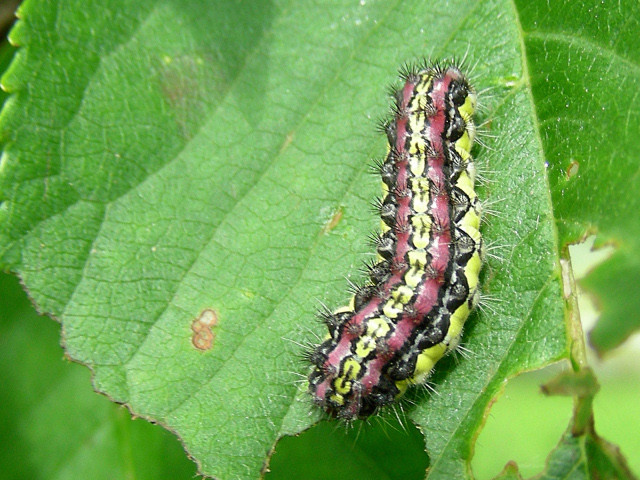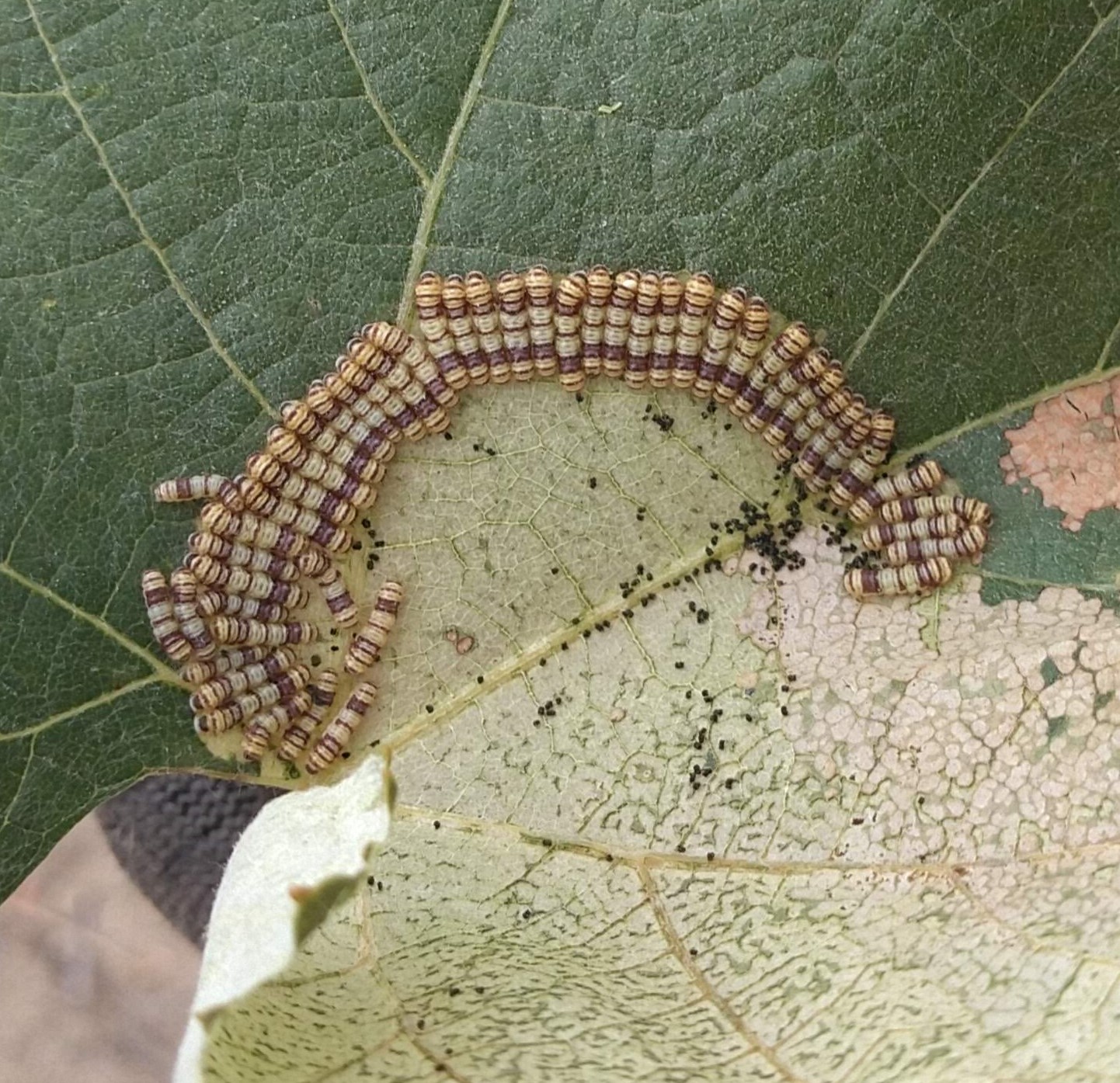|
Skeletonizer (other)
Several moth species are known as skeletonizers, including: *''Aglaope infausta'' (almond-tree leaf skeletonizer moth) *'' Bucculatrix ainsliella'' (oak leaf skeletonizer, oak skeletonizer) *''Bucculatrix albertiella'' (oak-ribber skeletonizer) *''Bucculatrix canadensisella'' (birch skeletonizer) *''Catastega aceriella'' (maple trumpet skeletonizer moth) *'' Choreutis nemorana'' (fig-tree skeletonizer moth, fig leaf roller) *''Choreutis pariana'' (apple-and-thorn skeletonizer, apple leaf skeletonizer) *''Harrisina americana'' (grapeleaf skeletonizer) *''Harrisina metallica'' (western grapeleaf skeletonizer) *'' Prochoreutis inflatella'' (skullcap skeletonizer moth) *''Schreckensteinia festaliella ''Schreckensteinia festaliella'', the blackberry skeletonizer, is a moth of the family Schreckensteiniidae Species description, first described by Jacob Hübner in 1819. It is found in the Palearctic including Europe and has been introduced to No ...'' (blackberry skeletonizer) See also ... [...More Info...] [...Related Items...] OR: [Wikipedia] [Google] [Baidu] |
Aglaope Infausta
''Aglaope infausta'', or almond-tree leaf skeletonizer moth, is a moth of the family Zygaenidae. Description The wings are gray with some red towards the base. The thorax is black and is crossed with a red band. The wingspan is about . The caterpillar can retract its head into its prothorax. A yellow band with black spots runs along the caterpillar's dorsum. The pupation usually starts in early June as an elongated cocoon that is whitish or light brown. The pupa is pink or yellowish and is long. The larvae feed upon '' Prunus spinosa'', ''Crataegus'' sp., ''Cotoneaster'' sp., and other species in the family Rosaceae. The species is a pest on foliage and young fruit. The species shows a very low level of genetic heterogeneity for a lepidopteran species, but it does not affect the species' viability. In the Ice Age, differentiation into two genetic lineages occurred. Mating The external male sex organs are subject to sexual selection by the female. The male may rub the f ... [...More Info...] [...Related Items...] OR: [Wikipedia] [Google] [Baidu] |
Bucculatrix Ainsliella
''Bucculatrix ainsliella'', the oak leaf skeletonizer or oak skeletonizer, is a moth species of the family Bucculatricidae. It is found in the northern part of the United States, down to North Carolina and Mississippi and the Southern parts of Canada, including British Columbia. In 2011 it was discovered in the Netherlands and Belgium. It was first described in 1905 by Mary Murtfeldt Mary Esther Murtfeldt (6 August 1839, New York City – 23 February 1913, Kirkwood, Missouri, Kirkwood) was an American entomologist, botanist, botanical collector, writer and editor. She undertook research on the life histories of insects, descr .... The wingspan is 7–8 mm. Adults are on wing between February and August depending on the location. The larvae feed on '' Quercus'' species, first as leaf miner and later feeding externally. References External linksBug Guide [...More Info...] [...Related Items...] OR: [Wikipedia] [Google] [Baidu] |
Bucculatrix Albertiella
The oak-ribbed skeletonizer (''Bucculatrix albertiella'') is a moth species of the family Bucculatricidae. It was first described by August Busck in 1910. It is found along the west coast of the United States. The wingspan is 8–9 mm. The larvae feed on ''Quercus An oak is a tree or shrub in the genus ''Quercus'' (; Latin "oak tree") of the beech family, Fagaceae. There are approximately 500 extant species of oaks. The common name "oak" also appears in the names of species in related genera, notably ' ...'' species. External linksBug Guide Bucculatricidae Moths described in 1910 Moths of North America {{Gracillarioidea-stub ... [...More Info...] [...Related Items...] OR: [Wikipedia] [Google] [Baidu] |
Bucculatrix Canadensisella
''Bucculatrix canadensisella'', the birch skeletonizer, is a moth of the family Bucculatricidae. The species was first described by Vactor Tousey Chambers in 1875. It is found in North America. In Canada, it has been recorded from New Brunswick to British Columbia, Nova Scotia and Prince Edward Island. In the United States, it has been recorded from New York, New Jersey, Michigan, Wisconsin, Minnesota, Pennsylvania, North Carolina, Tennessee, Kentucky and Colorado. The wingspan is 7-8.5 mm. The base of the wing is white, this white colour sometimes spreading outwardly below the fold. The ground colour of the forewings is dark brown, reddish brown, or sometimes paler fuscous and then more or less irrorated. The hindwings are grey. Adults have been recorded on wing from April to September. Adults are on wing between June and July depending on the location. The larvae feed on ''Betula'' species, including '' Betula nigra'', '' Betula lutea'' and '' Betula occidentalis''. They m ... [...More Info...] [...Related Items...] OR: [Wikipedia] [Google] [Baidu] |
Catastega Aceriella
''Catastega aceriella'', the maple trumpet skeletonizer moth, is a moth of the family Tortricidae. It is found in North America from southern Ontario and Nova Scotia to North Carolina and Tennessee. The wingspan The wingspan (or just span) of a bird or an airplane is the distance from one wingtip to the other wingtip. For example, the Boeing 777–200 has a wingspan of , and a wandering albatross (''Diomedea exulans'') caught in 1965 had a wingspan of ... is 13–17 mm. Adults are greyish brown. There may be more than one generation per year. The larvae feed on '' Acer'' species. They skeletonise the leaves of their host, resulting in a trumpet construction. References External linksBug Guide Eucosmini Moths described in 1861 {{Eucosmini-stub ... [...More Info...] [...Related Items...] OR: [Wikipedia] [Google] [Baidu] |
Choreutis Nemorana
''Choreutis nemorana'', the fig-tree skeletonizer moth or fig leaf roller, is a species of moth of the family Choreutidae. Description ''Choreutis nemorana'' has a wingspan of 16–20 mm. The basic color of the forewings varies from reddish brown to ocher brown, with whitish markings. The hindwings are brownish, with two pale brown dots on the edge. Adults overwinter and appear in early spring. The larvae feed on fig leaves. They are protected by a web of silken threads. Adults of the summer generation emerge in July. The second generation emerges in autumn and hibernate. The species is considered a minor pest, causing distortion of the leaves and discoloration, scarring and tattering. File:Choreutis nemorata.jpg, ''Choreutis nemorana'' File:Choreutis_nemorata-V.jpg, The underside of the hind wings File:Choreutis nemorana mounted.jpg, Mounted adult File:Choreutis nemorana larva under webbing.jpg, Larva under webbing File:Choreutis nemorana larva exiting web shelter.jpg ... [...More Info...] [...Related Items...] OR: [Wikipedia] [Google] [Baidu] |
Choreutis Pariana
''Choreutis pariana'', the apple-and-thorn skeletonizer or apple leaf skeletonizer, is a moth of the family Choreutidae. The moth was first described by the Swedish entomologist Carl Alexander Clerck in 1759. It is native to Eurasia and was introduced to New England, USA in 1917. Physical characteristics The wingspan is 11–15 mm. Life cycle The larvae feed, under a fine silken web on the upperside of a leaf, eating the parenchyma, except for the lower cuticle, which is left as a brown blotch resulting in a skeleton leaf appearance. Larvae are found on crab apple (''Malus pumila''), hawthorn ('' Crataegus'' species), paper birch (''Betula papyrifera''), willow (''Salix'' species), cherry (''Prunus'' species), whitebeam (''Sorbus'' species), ash ('' Fraxinus'' species), rose (''Rosa'' species) and alder (''Alnus'' species). Larvae have been recorded from June to early September in North America, while in Britain they are found in May and June and again in August. Larva p ... [...More Info...] [...Related Items...] OR: [Wikipedia] [Google] [Baidu] |
Harrisina Americana
The grapeleaf skeletonizer (''Harrisina americana'') is a moth in the family Zygaenidae. It is widespread in the eastern half of the United States, and commonly noticed defoliating grapes, especially of the Virginia creeper (''Parthenocissus quinquefolia''). The western grapeleaf skeletonizer ('' Harrisina metallica'') is very similar to and slightly larger than ''H. americana,'' but their distributions are different. Members of this family all produce HCN (hydrogen cyanide) a potent antipredator toxin.Wikipedia: Zygaenidae Identification The adult has narrow black wings, usually held away from the body at rest, and a reddish collar. The wingspan is 18–28 mm, the length 8–12 mm. The larva has a dark head; the body is yellow with a complete black band across each abdominal segment. The larvae can reach up to 15 mm in length.Wagner Life history There are several generations per year in the south, and one in the north of its range. Eggs Eggs are lemon yellow, ... [...More Info...] [...Related Items...] OR: [Wikipedia] [Google] [Baidu] |
Harrisina Metallica
''Harrisina metallica'', the western grapeleaf skeletonizer, is a species of moth of the family Zygaenidae. It is found in the Southwestern United States, from California to Texas, north to Colorado and Utah and in northern Mexico. The wingspan is . Adults are on wing from April to October depending on the location. The larvae feed on grapes and species of ''Parthenocissus ''Parthenocissus'' , is a genus of tendril climbing plants in the grape family, Vitaceae. It contains about 12 species native to the Himalayas, eastern Asia and North America. Several are grown for ornamental use, notably ''P. henryana'', ''P. qu ...''. Some choose to call these larvae "grape worms" because of their impeccable taste for such a sweet fruit they're laid upon by their parents. The caterpillar also have stinging hairs that can cause rash or allergic reaction. They are in fact natures pest to precious to many grape vineyards affecting the crops yield for the season. The problem can be simply ... [...More Info...] [...Related Items...] OR: [Wikipedia] [Google] [Baidu] |
Prochoreutis Inflatella
''Prochoreutis inflatella'', the skullcap skeletonizer moth, is a moth of the family Choreutidae. It is found in eastern North America. The wingspan is 9–11 mm. Adults are on wing from June to September. There are several generations per year. The larvae feed on ''Scutellaria'' species, including ''Scutellaria lateriflora ''Scutellaria lateriflora'', (commonly "blue skullcap", "mad dog skullcap",mothphotographersgr ... [...More Info...] [...Related Items...] OR: [Wikipedia] [Google] [Baidu] |
Schreckensteinia Festaliella
''Schreckensteinia festaliella'', the blackberry skeletonizer, is a moth of the family Schreckensteiniidae Species description, first described by Jacob Hübner in 1819. It is found in the Palearctic including Europe and has been introduced to North America Description The moth's wingspan is 10–12 mm. The head is pale metallic bronzy-ochreous. Forewings are pale shining ochreous ; base and costa suffused with fuscous ; a dark fuscous streak from base along fold to tornus, thence along termen nearly to apex ; a dark fuscous median longitudinal streak from before 1/3 of disc to costa close before apex, at 2/5 enlarged into a spot, which tends to form a fascia with dark costal and tornal suffusion. Hindwings are dark grey. The larva is pale green ; dorsal line darker head and plate of 2 green. Biology There are two or three generations and adults are on wing from March to September. The imago is active by day and rests on its forelegs and mid-legs only, with the hindlegs raise ... [...More Info...] [...Related Items...] OR: [Wikipedia] [Google] [Baidu] |
Skeletonization (other)
Skeletonization may refer to *Skeletonization, the final stage of death, for organisms with internal skeletons *Topological skeletonization, a digital imaging method. *Skeletonization Skeletonization is the state of a dead organism after undergoing decomposition.The Australian Museum. (2018). Decomposition-Body Changes. Retrieved from: https://australianmuseum.net.au/about/history/exhibitions/death-the-last-taboo/decomposit ... of categories, a technique in category theory. {{Disambig ... [...More Info...] [...Related Items...] OR: [Wikipedia] [Google] [Baidu] |

